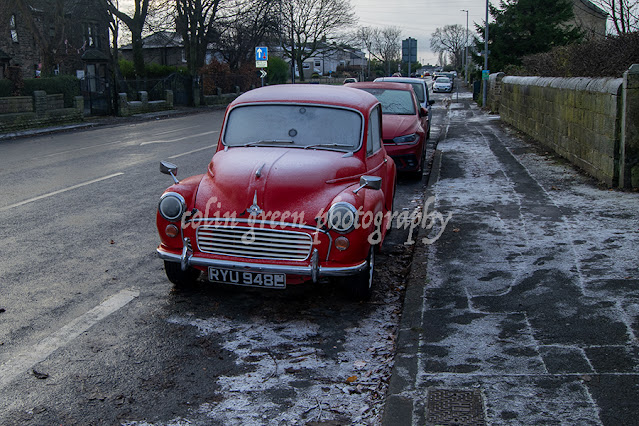Todmorden, a town steeped in history and surrounded by the stunning Pennine landscape, offers a unique blend of urban charm and natural beauty. On a chilly January morning, I ventured out to explore a couple of its most iconic spots, and the crisp, clear air only added to the atmosphere.
Water Street: A Cobbled Canvas
My journey began on Water Street, a quiet cobbled lane that seems to have a story to tell with every stone. The street is lined with historic buildings, their stone facades and large windows hinting at a past life of industry and community. With the morning sky a deep blue and the lamplight just beginning to fade, the street felt like a movie set—a perfect moment of stillness before the town awoke. The spire of a church in the distance and a sliver of the moon overhead completed the picture, a reminder of the timeless beauty that can be found in everyday places.
The Golden Lion: A Timeless Landmark
Just a stone's throw from Water Street, I found The Golden Lion. A classic pub that stands as a testament to Todmorden's rich heritage. Its weathered stone and distinctive signage beckon you in, promising warmth and good cheer. Even from the outside, the pub’s character is undeniable. The contrast between the rough stone of the building and the bright, moss-covered porch tells a story of years gone by. The Golden Lion isn't just a pub; it's a piece of Todmorden's soul, a place where people have gathered for generations.
Todmorden is a town that invites you to slow down and notice the details. From the historic cobbles of Water Street to the timeless appeal of The Golden Lion, every corner holds a piece of its past, waiting to be discovered. Whether you're a history buff, a lover of architecture, or simply looking for a quiet place to wander, Todmorden is a destination that truly delivers.
Clicking either of the images above should open a link in another window to my Colin Green Photography store on Zazzle.
























































